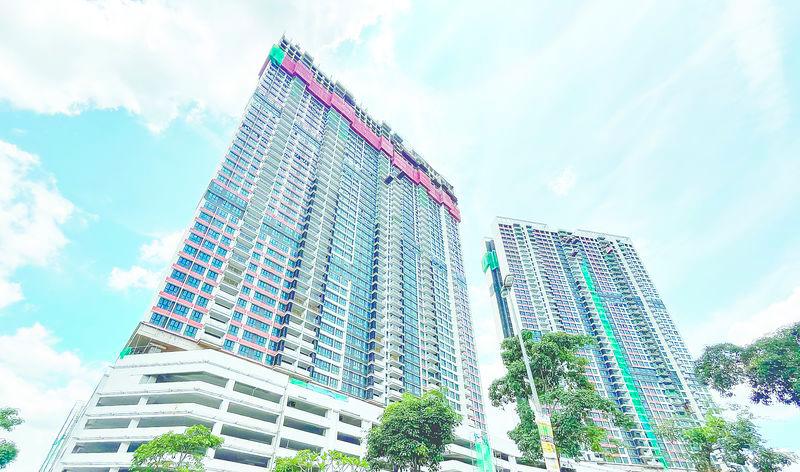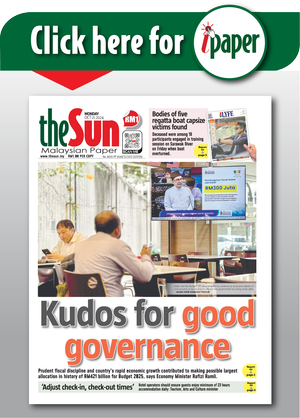PETALING JAYA: The powerful earthquake that struck Myanmar last month, sending tremors rippling across Southeast Asia, serves as a reminder of Malaysia’s growing vulnerability to natural disasters driven by climate change and seismic activity.
Universiti Teknologi Malaysia structural earthquake engineering expert Prof Dr Azlan Adnan warned that unless Malaysia strengthens the resilience of its buildings and infrastructure, the next tremor closer to home could be devastating.
“The quake in Myanmar proves that distance is no guarantee of safety. Bangkok, that is over 1,000km from the epicentre, still suffered damage, including a collapsed tower.
“Cities such as Kuala Lumpur, Penang and Johor are even closer to the Sumatra Fault Zone and the Sunda Subduction Zone, just 300km to 600km away.”
Azlan added that recent climatic anomalies, such as rising sea levels, are placing additional pressure on seabed fault lines, potentially increasing seismic risks in the region.
“Rising seawater from climate change doesn’t just erode coastlines, but it increases pressure on underater fault lines, raising the likelihood of earthquakes.”
He added that many buildings in Malaysia, although modern in appearance, are not designed to withstand seismic events.
“Most high-rise buildings in Malaysia are engineered to resist wind loads, not earthquakes. Soft alluvial soils and reclaimed land in areas such as the Klang Valley and Putrajaya could amplify seismic waves. This could turn a minor tremor into devastating ground motion.
“If an earthquake’s vibrations match a building’s natural rhythm, a phenomenon known as resonance, even strong buildings could be seriously damaged,” he said.
Building repair and rectification expert Kuan You Wai echoed Azlan’s concerns and called on the government to subsidise seismic retrofitting (process of upgrading buildings) of older buildings and enforce modern, earthquake resilient building codes.
“We need to make seismic design a standard, not a luxury. Malaysia should adopt Eurocode 8 (the European standard for designing earthquake-resistant structures) and retrofit existing buildings with base isolators and energy-damping
systems, especially at locations with earthquake risks such as Bentong, Kuala Lumpur, Miri, Kota Kinabalu, Renau, Kuala Lipis, Manjong and Kenyir, that have experienced tremors in the past.”
Kuan also emphasised the importance of post-earthquake structural audits under section 85A in the Street, Drainage, and Building Act 1974 to assess and reinforce vulnerable structures after a disaster strikes.
“Malaysia’s vast network of flyovers, pedestrian bridges and public transport systems is also at risk. The Penang Bridge and Kuala Lumpur’s LRT and MRT lines were not built with major seismic events in mind.
“Flexible joints, seismic bearings and reinforced columns must become the norm, especially in high-traffic areas.”
He called for nationwide microzonation (mapping how local soil affects seismic activity) studies to assess the influence of soil on earthquakes and use computer simulations to indicate how key infrastructure would perform during different earthquake scenarios.
“Preparedness is not just a policy, but it must become a culture. We need to train engineers, architects and planners in seismic design.
Real-time monitoring tools such as the MyShake app, that detects earthquakes and alerts users, and regular earthquake drills must be prioritised,” he said.
With climate change triggering more extreme weather and geological disturbances, he stressed that urgent action is needed.
“The Myanmar earthquake is no longer just someone else’s problem. It’s a preview of what could happen here.
“We must not wait for buildings to collapse before taking steps. Think of families in high-rise apartments, children in decades-old schools and workers crossing bridges daily,” he said.
“The cost of doing nothing may cost lives.”
Among the measures proposed by Azlan and Kuan are funding for earthquake mitigation programmes, enforcing stricter building codes and investing in public education and early warning systems.









